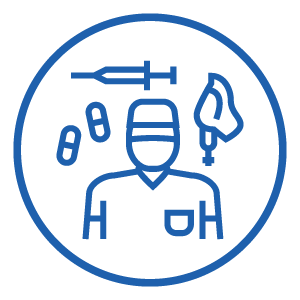 Anesthesia
Anesthesia
Orthopedic surgeons join Perioperative Surgical Home program
Editor's Note The American Society of Anesthesiologists announced June 22 that the American Academy of Orthopaedic Surgeons (AAOS) is participating in the development of the Perioperative Surgical Home (PSH) model of care. The expected benefits include enhanced clinical quality, better patient experience, lower complication rates and readmissions, reduce length of…
Total joint Perioperative Surgical Home program at 2 years
Editor's Note In this study, researchers from the University of California, Irvine, report on data for the second year of implementation of the total joint replacement Perioperative Surgical Home program. During the 2-year period there were 328 primary joint arthroplasty patients. Length of stay was significantly shorter in the second…
Effect of surgeons, anesthesiologists on OR time
Editor's Note Compared with type of procedure, differences between surgeons account for a small part of OR time variability, and the effect of differences between anesthesiologists is negligible, this study finds. Differences between surgeons accounted for 2.9% of variability in OR time, and differences between anesthesiologists accounted for 0.1%. …
Study: General anesthesia safe in young children
Editor's Note Children who received a single general anesthesia under age 3 had similar IQ, behavior, language, and mental functions, including attention, learning, memory, and thinking speed, between ages 8 and 15, compared with siblings who didn’t receive general anesthesia, this study finds. This multi-center study led by researchers at…
Effect of practice restriction, physician supervision on anesthesia patient safety
Editor's Note Scope of practice restrictions and physician supervision requirements for nurse anesthetists have no impact on anesthesia patient safety, this study finds. Examining 5.7 million anesthesia cases, researchers found that anesthesia complications differed significantly with: patient characteristics patient comorbidities the procedures being administered. Complication odds did not differ by…
Shoulder surgery new testing ground for opioid alternatives
Editor's Note As part of the drive to reduce opioid use, rotator-cuff repairs are becoming a testing ground for alternative approaches to pain management, the May 23 Wall Street Journal reports. Because rotator-cuff surgery is one of the most painful procedures to recover from, physicians hope that if alternative painkilling…
Noninvasive monitor accurately assesses response to pain during surgery
Editor's Note A new measure for assessing the body’s response to painful stimuli during surgery may allow for better anesthesia management, less pain when regaining consciousness, and better postoperative outcomes, this study finds. The measure, called the nociception (pain) level index, uses an algorithm to process multiple hormonal and neurological…
PSH Learning Collaborative gains participants in phase two
The perioperative surgical home (PSH) has been gaining momentum, with early results linking it to lower costs, better quality, fewer emergency department (ED) visits and readmissions, and shorter stays in skilled nursing facilities or none at all. In February, the PSH Learning Collaborative, a partnership between the American Society of…
PSH provides affordable, reliable care for adult and pediatric patients
Affordable, reliable care for adult and pediatric patients alike is the hallmark of the perioperative surgical home (PSH), as demonstrated by two organizations that are using PSH programs: a community health system and a children’s hospital. Leaders from both organizations shared their PSH journeys with OR Manager. Lower costs, shorter…
Moderate sedation linked to better outcomes than general anesthesia for TAVR
Editor's Note The use of moderate sedation leads to better outcomes than general anesthesia for patients having transcatheter aortic valve replacement (TAVR), finds a study presented May 6 at the Society for Cardiovascular Angiography and Interventions annual meeting in Orlando, Florida. Of 10,997 patients included in the study, 1,737 received…

 Free Daily News
Free Daily News